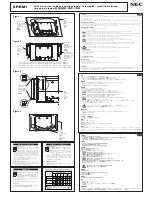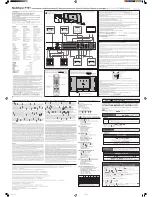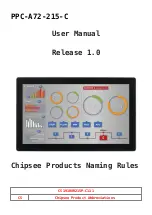
Normally, a permanent fail causes the FETs to remain off indefinitely and the fuse may be blown. In that
situation, no further action would be taken on further monitoring operations, and charging would no longer be
possible. To avoid rapidly draining the battery, the device may be configured to enter DEEPSLEEP mode when
a permanent fail occurs. Entrance to DEEPSLEEP mode will still be delayed until after fuse blow and OTP
programming are completed, if those options are enabled.
When a permanent fail occurs, the device may be configured to either turn the REG1 and REG2 LDOs off, or to
leave them in their present state. Once disabled, they may still be reenabled through command.
The permanent fail checks incorporate a programmable delay, to avoid triggering a PF fault on an intermittent
condition or measurement. When the threshold is first detected as being met or exceeded by an enabled PF
check, the device will set a PF Alert signal, which can be monitored using commands and can also trigger an
interrupt on the ALERT pin.
Note
The device only evaluates the conditions for permanent fail at one-second intervals while in NORMAL
and SLEEP modes. It does not continuously compare measurements to the permanent fail fault
thresholds between intervals. Thus, it is possible for a condition to trigger a PF Alert if detected
over threshold, but even if the condition drops back below threshold briefly between the one second
interval checks, the PF Alert would not be cleared until it was detected below threshold at a periodic
check.
For more details on the permanent fail checks implemented in the BQ76942, refer to the
. The secondary protection features include:
• Safety Cell Undervoltage Permanent Fail
• Safety Cell Overvoltage Permanent Fail
• Safety Overcurrent in Charge Permanent Fail
• Safety Overcurrent in Discharge Permanent Fail
• Safety Overtemperature Permanent Fail
• Safety Overtemperature FET Permanent Fail
• Copper Deposition Permanent Fail
• Short Circuit in Discharge Latch Permanent Fail
• Voltage Imbalance Active Permanent Fail
• Voltage Imbalance at Rest Permanent Fail
• Second Level Protector Permanent Fail
• Discharge FET Permanent Fail
• Charge FET Permanent Fail
• OTP Memory Permanent Fail
• Data ROM Permanent Fail
• Instruction ROM Permanent Fail
• Internal LFO Permanent Fail
• Internal Voltage Reference Permanent Fail
• Internal VSS Measurement Permanent Fail
• Internal Stuck Hardware Mux Permanent Fail
• Commanded Permanent Fail
• Top of Stack Versus Cell Sum Permanent Fail
11.4 High-Side NFET Drivers
The BQ76942 device includes an integrated charge pump and high-side NFET drivers for driving CHG and DSG
protection FETs. The charge pump uses an external capacitor connected between the BAT and CP1 pins that is
charged to an overdrive voltage when the charge pump is enabled. Due to the time required for the charge pump
to bring the overdrive voltage on the external CP1 pin to full voltage, it is recommended to leave the charge
pump powered whenever it may be needed quickly to drive the CHG or DSG FETs.
The DSG FET driver includes a special option (denoted source follower mode) to drive the DSG FET with the
BAT pin voltage during SLEEP mode. This capability is included to provide low power in SLEEP mode, when
SLUSE14B – DECEMBER 2020 – REVISED DECEMBER 2021
42
Copyright © 2021 Texas Instruments Incorporated
Product Folder Links:
Summary of Contents for BQ76942
Page 84: ......
















































